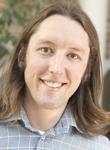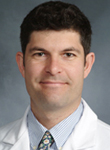Lucks, Seandel are NIH 'New Innovators'
By Anne Ju


Julius Lucks, assistant professor of chemical and biomolecular engineering, and Marco Seandel, assistant professor of cell and developmental biology in surgery at Weill Cornell Medical College, have been named 2013 “New Innovators” by the National Institutes of Health (NIH). The award is accompanied by a five-year, $1.5 million research grant under the NIH’s “High Risk High Reward” grant program.
The grant will support Lucks’ lab’s studies of the dynamic functional states of RNAs across the genome, and how RNA molecules fold inside cells.
Lucks calls RNA “life’s master molecule” – it can store and encode information like DNA, but can play more complex roles like those of proteins.
“We now know that [RNA] is critical to life’s most basic processes and, in fact, plays huge roles in regulating, maintaining and defending the genomes of all organisms,” Lucks said. “The problem is we don't know exactly how RNA does all of this.”
Lucks is leading the development of new technologies to measure the three-dimensional shapes of RNA, and to elucidate how RNA folding may be influencing gene expression in eukaryotic systems.
The work could be important to the study of human health by increasing understanding of how RNAs are folding, and mis-folding, in cells, and how this might contribute to disease.
Seandel’s award will support his research into the earliest cellular and molecular alterations that lead to neurodevelopmental syndromes, congenital heart disease, cancer and skeletal defects, among others.
His research focuses on whether genetic mutations that cause these disorders originate in the testicular stem cells of affected children’s fathers, and whether older fathers are more susceptible to these genetic mutations.
Much of the risk of certain diseases was previously attributed to external factors, including the environment. However, it is now apparent that genes can change over the course of a person’s lifetime, which could explain why unaffected parents have children with such disorders, Seandel said. Researchers believe that risk of disease development in children increases with the age of fathers – a concept known as the paternal age effect. But the experimental data to explain how this occurs are limited and only apply to selected rare diseases, Seandel said.
More information: http://commonfund.nih.gov/newinnovator/Recipients13.aspx
Media Contact
Get Cornell news delivered right to your inbox.
Subscribe